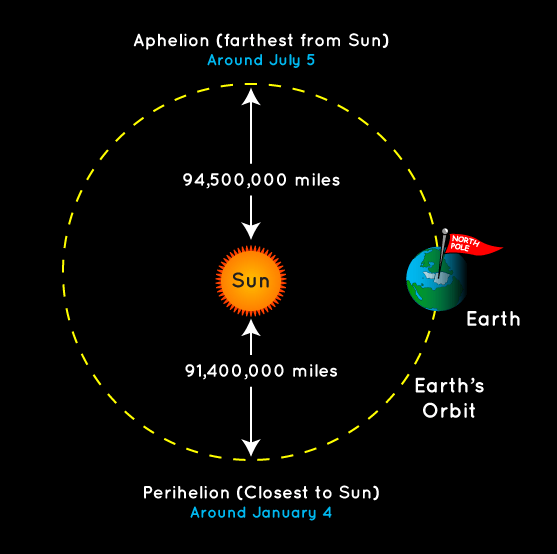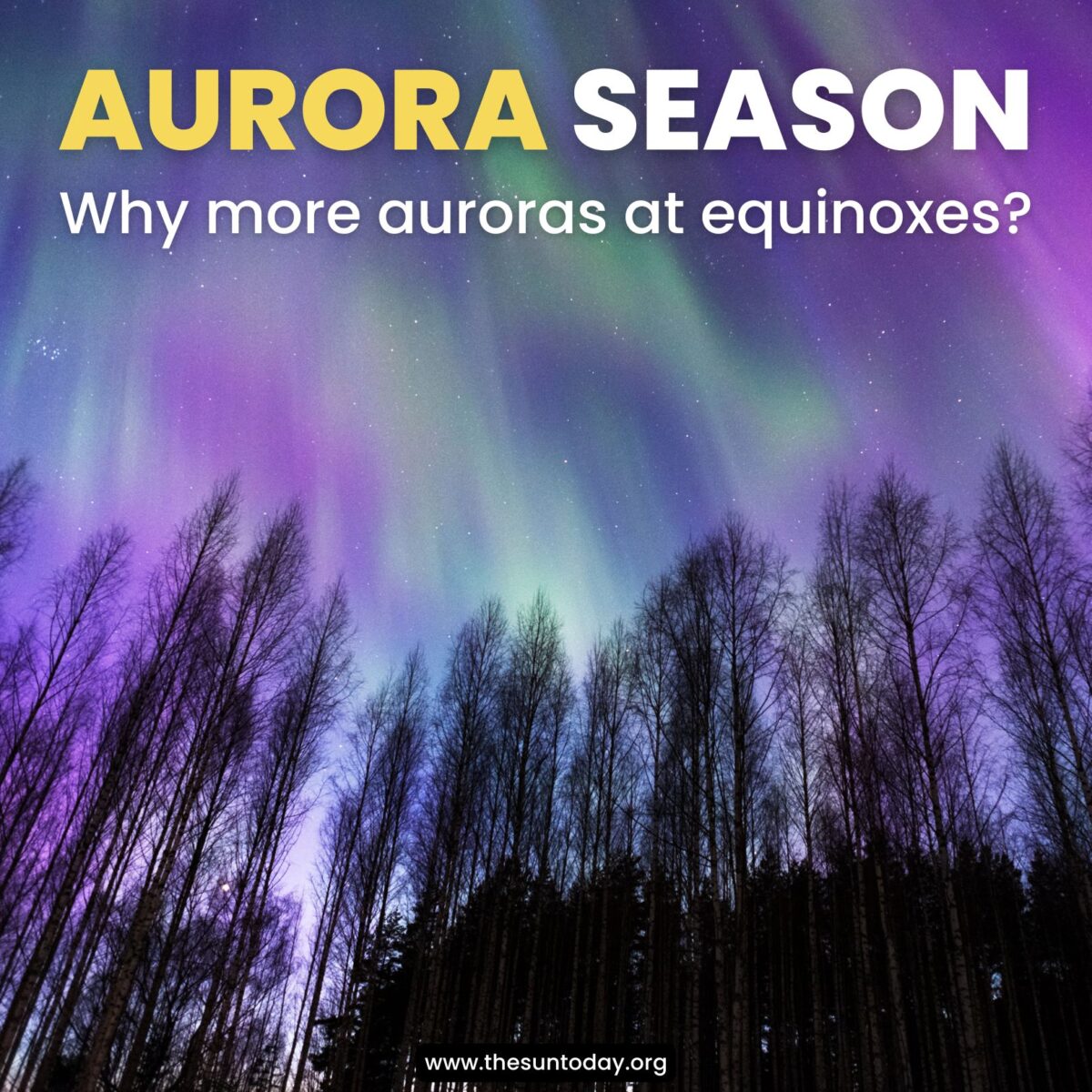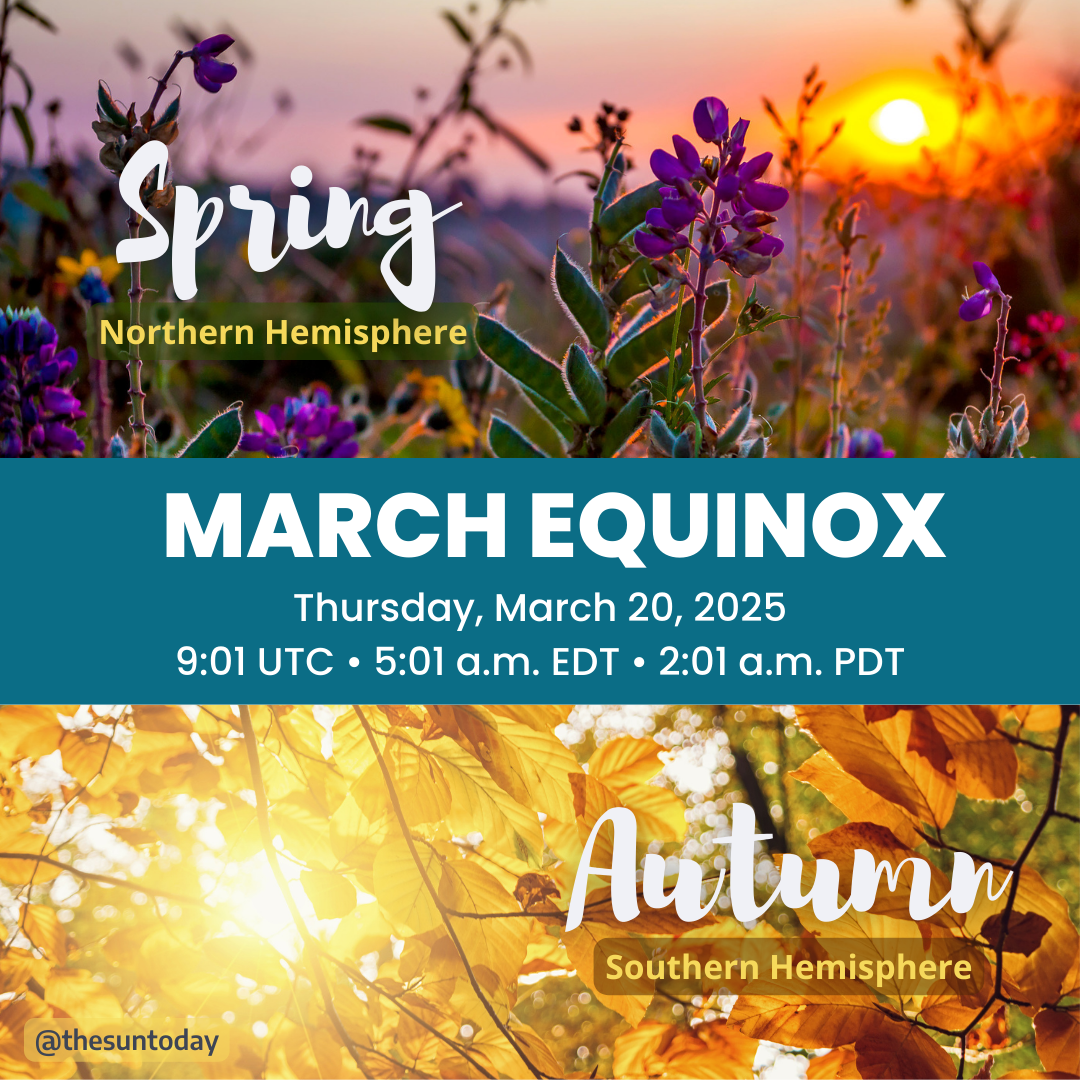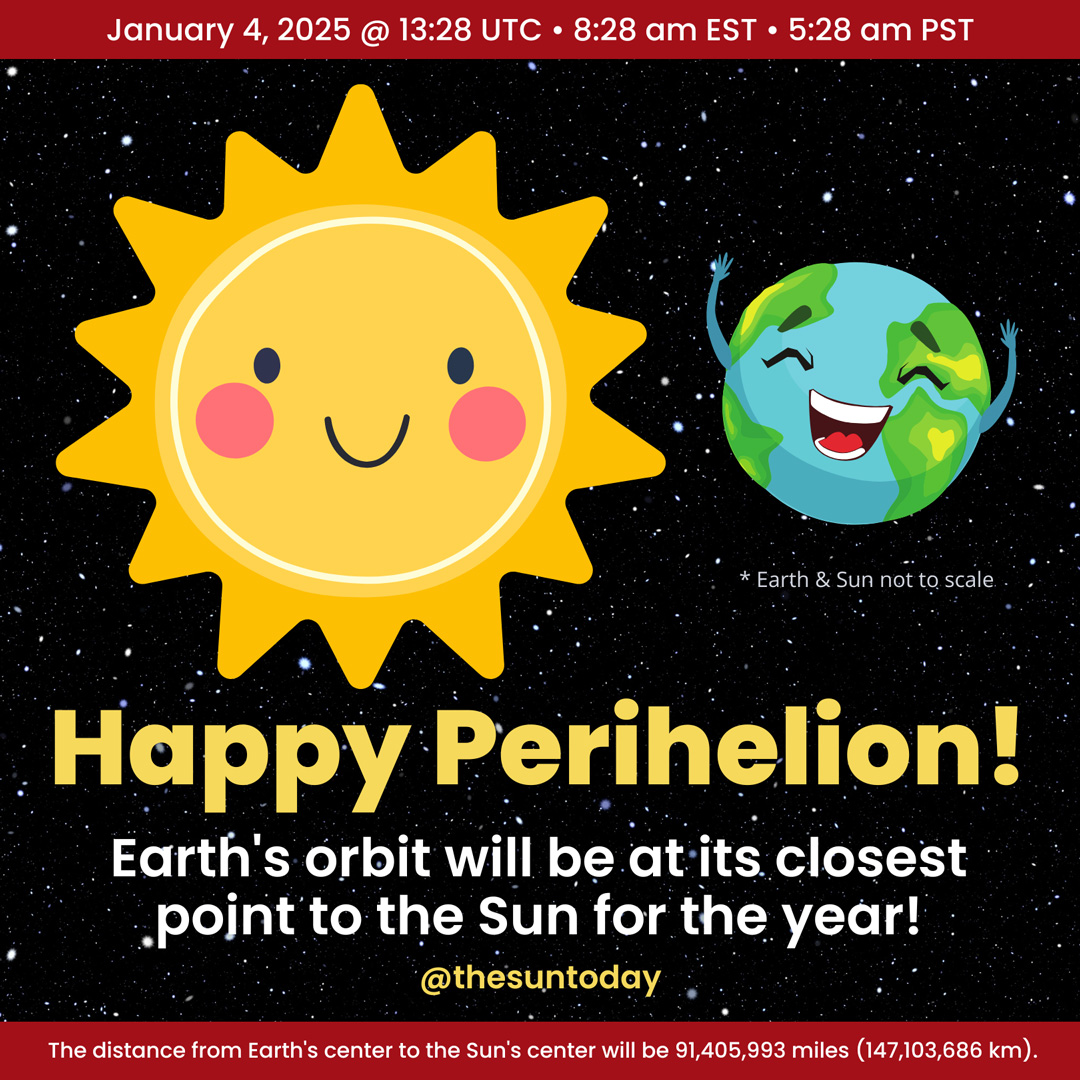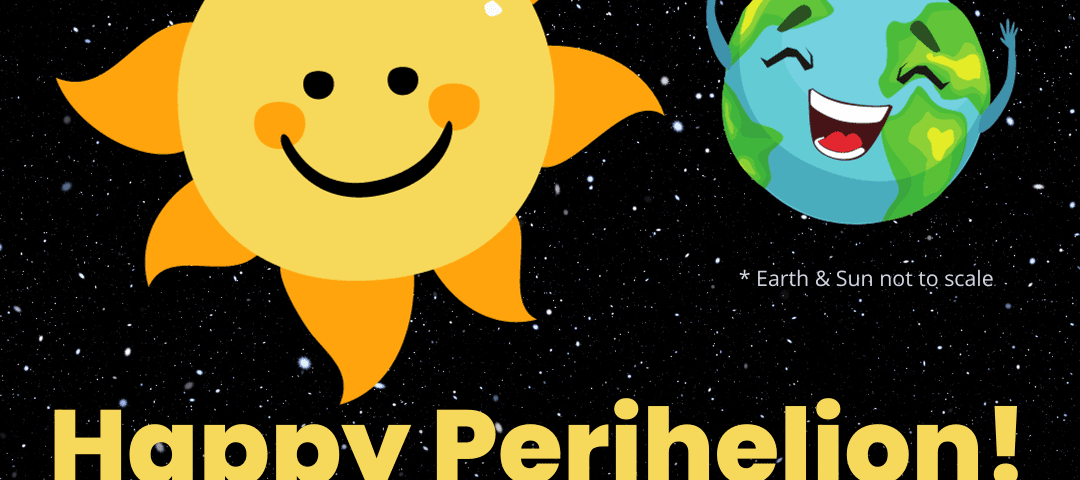
It is that time of year again when Earth makes a close swing by the Sun!
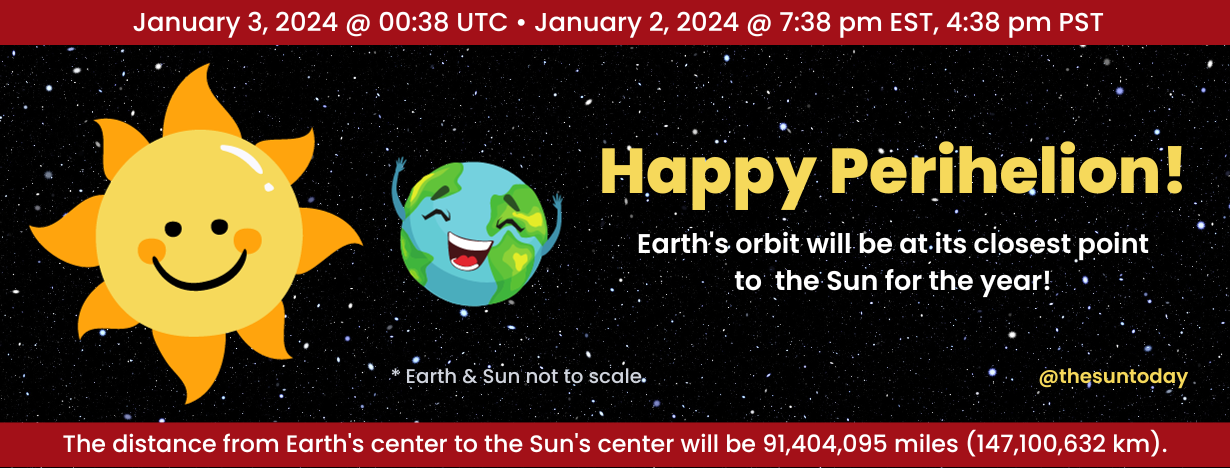
On January 3, 2024, at 00:38 UTC (January 2, 2024, 7:38 p.m. EST or 4:38 p.m. PST), Earth’s orbit will be at our closest point to the Sun for the year (91,404,095 mi or 147,100,632 km).
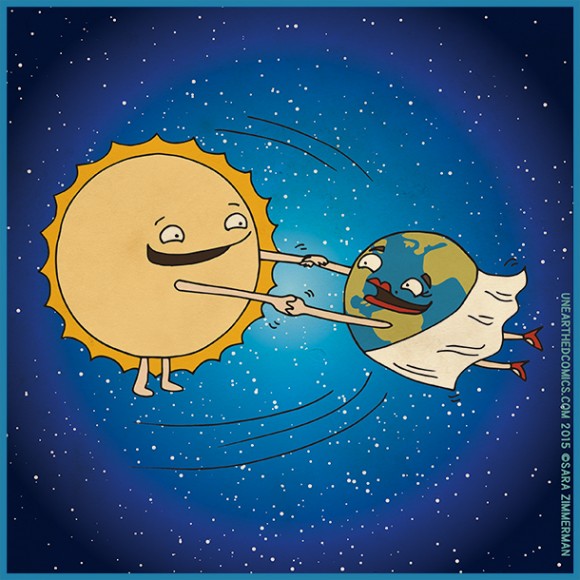
A cartoon of the Sun swinging Earth. Earth orbiting around the Sun. credit: Cartoon via Sara Zimmerman at UnEarthed Comics. (shared by Earthsky.org)
This point of closest approach to the Sun is called perihelion. The point when Earth is farthest from the Sun is called aphelion.
- These terms are specific to a body orbiting the Sun.
- For satellites of Earth (including the Moon), the points of the farthest and closest approach are called apogee and perigee, respectively.
- The generic terms for the farthest and closest approach of a body in an elliptic orbit about a larger body are apoapsis and periapsis, respectively.
The diagram below shows the times and positions of the Earth during the solstices, equinoxes, perihelion, and aphelion as it orbits the sun over a year.
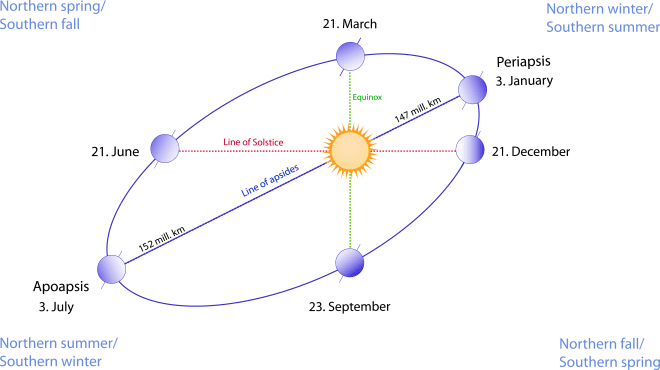
Credit: http://bit.ly/1pQn7wy
This diagram shows the relation between the line of solstice and the line of apsides of Earth’s elliptical orbit. The orbital ellipse (with eccentricity exaggerated for effect) goes through each of the six Earth images, which are sequentially the points of:
- Perihelion (periapsis—nearest point to the sun) on anywhere from 2 January to 5 January
- March equinox on 20 or 21 March
- June solstice on 20 or 21 June
- Aphelion (apoapsis—the farthest point from the sun) on anywhere from 4 July to 7 July
- September equinox on 22 or 23 September,
- December solstice on 21 or 22 December.
- Learn more about solstices and equinoxes…
A common misconception is that seasons are caused by our distance from the Sun. The Earth’s tilt is what causes the seasons.
However, the times of greatest solar radiation on a hemisphere happen not because of the distance between the Earth and sun but the tilt of Earth’s rotation axis. These times are during the December and June solstices.
The solstices happen because of the tilt of Earth’s axis of rotation with respect to its orbital path around the Sun. The axis of rotation is an imaginary line drawn straight through Earth connecting the North Pole to the South Pole. This line is tilted 23.5° from Earth’s orbital path around the Sun. This means that the Sun’s light does not hit the Earth evenly at a particular latitude above and below the equator. This tilt is the cause of Earth’s seasons.
- At perihelion Earth is 0.9833 Astronomical Units (AUs) or 147,100,632 kilometers (91,404,095 miles) from the sun
- At aphelion, it is 1.0167 AU or 152,099,969 kilometers (94,510,539 miles) from the sun.
Here are Earth’s perihelions and aphelions for 2024 through 2028.
| Year | Perihelion | Distance | Aphelion | Distance |
|---|---|---|---|---|
| 2024 | January 2, 2024 7:38 pm | 91,404,095 mi | July 5, 2024 1:06 am | 94,510,539 mi |
| 2025 | January 4, 2025 8:28 am | 91,405,993 mi | July 3, 2025 3:54 pm | 94,502,939 mi |
| 2026 | January 3, 2026 12:15 pm | 91,403,637 mi | July 6, 2026 1:30 pm | 94,502,962 mi |
| 2027 | January 2, 2027 9:32 pm | 91,406,556 mi | July 5, 2027 1:05 am | 94,510,857 mi |
| 2028 | January 5, 2028 7:28 am | 91,404,129 mi | July 3, 2028 6:18 pm | 94,506,289 mi |
| * All aphelion/perihelion times are in local Eastern time (ET). | ||||
Spacecraft Also Have Perihelion & Aphelions
Upcoming closest approaches to the Sun of note are:
- The next perihelion for NASA’s Parker Solar Probe is March 30, 2024.
- The next perihelion for ESA’s Solar Orbiter is also in April 4, 2024.


